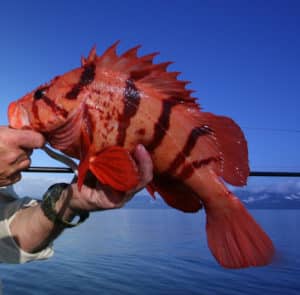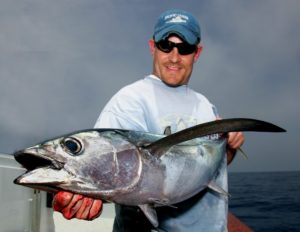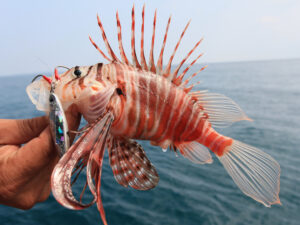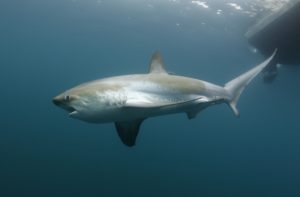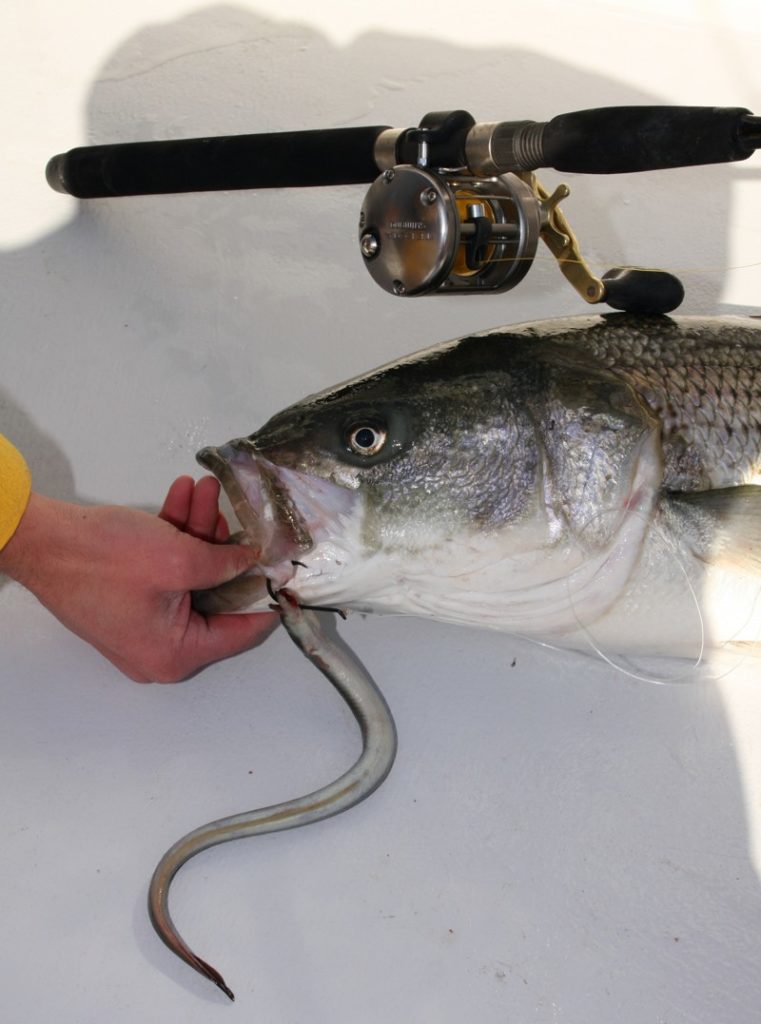
Talk to any angler who enjoys striped bass fishing, and he or she will be able to rattle off a great number of striped bass baits that work effectively – but which are the very best baits for stripers? With all the different options out there, and the spirited nature of striper aficionados, this question can stir up some lively debate. But there’s one thing every enthusiast can agree on: Which striped bass baits are best at any given time in any given place will vary, depending on the conditions and what the fish are naturally feeding on. Here’s our advice for catching striped bass with bait.
Live Eels as Striped Bass Baits
Live eels are used by anglers throughout the species’ range, and with good reason. Quite simply, the fish love slurping them down. Eels can be drifted or trolled, and fished deep with weight or suspended high in the water column under a float. However, they aren’t always a pleasure to fish with. Those slimy eels are very tough to get a grip on; they sometimes tie themselves – and your leader – into knots; and they can be expensive. When toothy bluefish are around, the cost of eels even more of an issue, since it’s common to feel a tug and then reel up half an eel. And remember that generally speaking, eels are only effective when there are naturally-occurring eels in the area at the same time of year.
On the other hand, not only do the striped bass like eating eels, this striper bait has a special attribute: Small fish rarely attack a live eel. In fact, fish under 26 or so inches usually steer clear of eels entirely. So anglers in search of big keepers can use them to pre-cull the catch when lots of small fish are around.
Bunker and Herring as Striped Bass Baits
Bunker (also known pogies or alewives or, properly as menhaden) are probably the number-one most common bait used for stripers, and herring aren’t far behind. We’re lumping these two types of fish together because they’re extremely similar and usually are equally effective. In most cases, which an angler will choose boils down to availability at the bait shop.
Most would agree that these baitfish are more effective when fished live, although acquiring live bunker or herring is very difficult in most areas. Often, if you want live baits you’ll have to net them yourself. But they’re readily available refrigerated or frozen just about everywhere, at local tackle shops. Chunks of bunker can be used as stand-alone striped bass baits, or for chunking and chumming. And since these baitfish are basic striped bass forage fish which swim in virtually every waterway the stripers are found, they generally eat them with abandon all seasons of the year.
Crabs as Striped Bass Baits
Like most fish, stripers love crabs. And while they will eat small hard crabs whole when given the opportunity, “soft” crabs that have shed their shell, or “peelers” which have a soft shell underneath their armor, are what the stripers really enjoy feasting on. Both forms of these striped bass baits have their own problems; soft crab is easily ripped free from the hook so stolen baits are common, while peeler crabs require some extra effort since you’ll want to remove much of the hard shell before trying to tempt the stripers with them. Soft crab and peelers can also be quite expensive. But the fact remains: striped bass have a hard time passing these baits up.
As usual, however, crab is usually most effective in areas where you can match the hatch. In some of the striper’s northern ranges they aren’t as common and as a result, don’t get the same amount of attention from the fish as they would to the south. These baits are also most effective during the warmer months of the year, when crabs naturally shed. During the winter when crabs don’t become soft in the wild, other types of striped bass baits will usually prove to be much more effective.
Clams as Striped Bass Baits
In some specific areas, clams shine as a striper bait. As one might guess, those areas usually coincide with where clams are naturally found. They’re particularly effective in areas of strong, changing currents, where clams may become uncovered and represent a meal of opportunity for hungry stripers.
Although historically people did chum with clams, usually by smashing a few together then tossing the shells and clam bits overboard while their hook baits sat on bottom, few people use that technique these days due to the cost of clams. Shucking them and fishing the body whole on a circle hook is much more common.
Bloodworms and Sandworms as Striped Bass Baits
Bloodworms and sandworms are highly effective striper baits just about everywhere these fish are found, virtually any time of the year. Stripers love eating them, period. But using bloodworms and sandworms does have its own set of issues. Start with cost – many jaws have hit the floors of tackle shops, when people were told they’d be spending a dollar or more per worm. Add to that the fact that you usually need to buy lots of them, because along with stripers virtually all other species of fish also eat bloodworms. You may have to weed through dozens of strikes from assorted panfish and other bait-stealing marauders before a striped bass finally finds your hook. On top of all that, these worms are also problematic simply because they’re relatively small compared to most other striped bass baits. You may be fishing a whole bloodworm while visions of a 40-inch striper run through your mind, yet reel up 10-inch croakers and sea robins one after another.
Other Live Baitfish as Striped Bass Baits
Live fish of various species are often excellent striped bass baits, specifically depending on when and where large numbers of a particular species is present. When huge numbers of 4- to 6- inch spot (croakers) swim north during the summer months, for example, live-lining with spot often becomes the number-one way to catch fish. Similarly, along many coastal areas when finger mullet begin their migration and push through inlets in large numbers during the fall, live mullet can become very tough to top.
The bottom line? Like most predators, striped bass are opportunistic feeders and will tend to focus in on the prey that’s plentiful. As a result, anyone trying to identify the best striped bass baits is shooting at a moving target. Which one is best can – and will – change from place to place, and over time. Don’t forget to check out our tips for using lures to catch striped bass.

